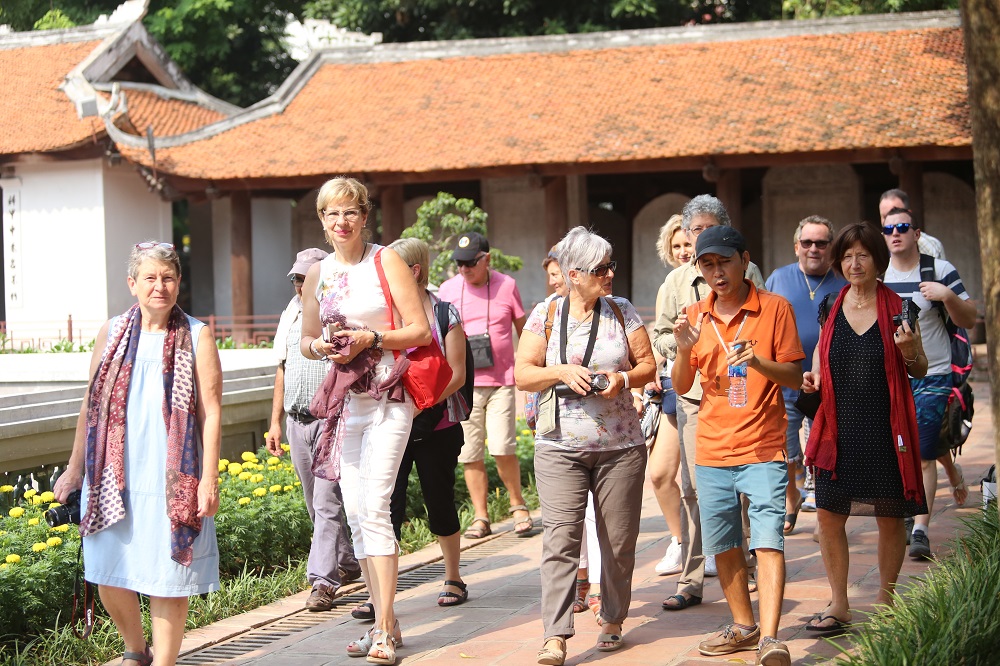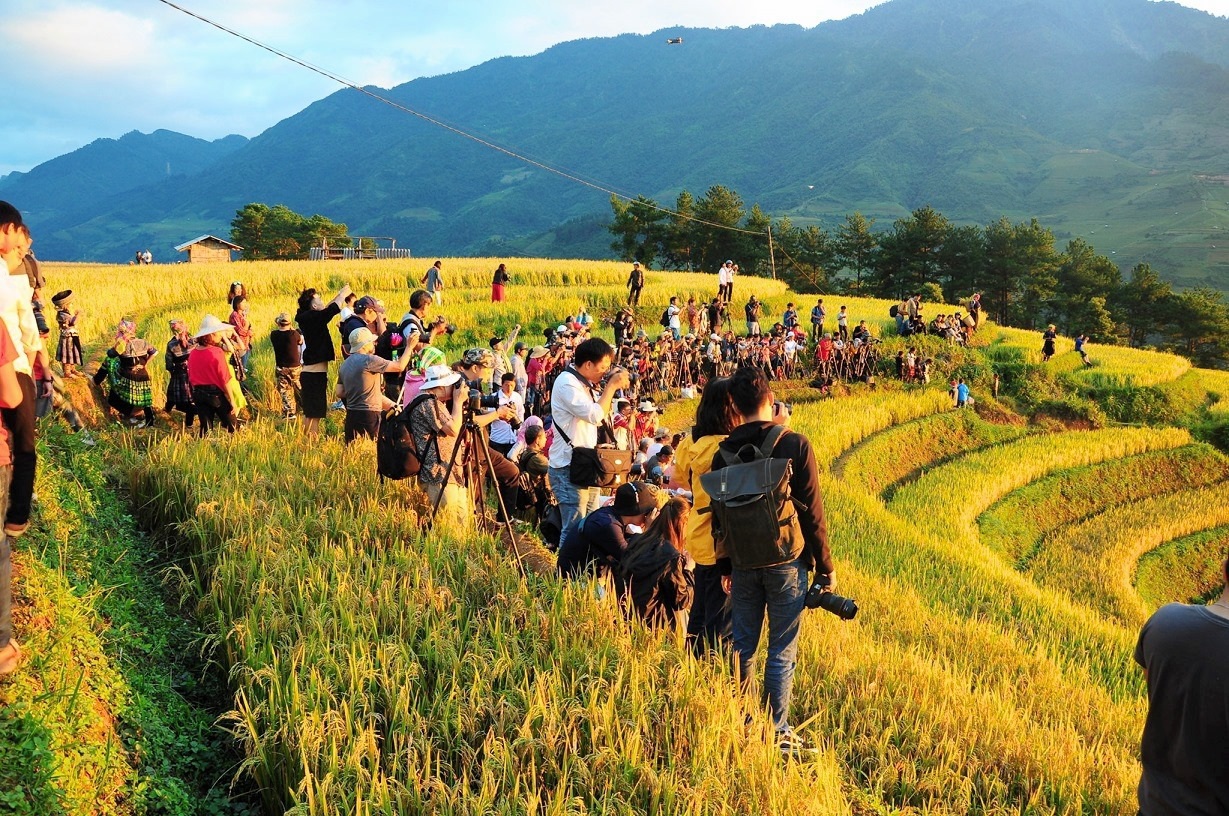As Vietnam’s tourism numbers continue to shoot skywards, the debate over whether to hit the popular hotspots or veer down the path less traveled is hotly contested.

In excess of 10 million tourists crossed over the Vietnamese border last year, a record that has already been smashed in the first 10 months of this year. Because of the rapid growth of the nation’s tourism industry, places that have usually been favoured by travelers are now becoming more crowded and busy as each year passes. This newfound flush of tourists is causing many people to look for quieter alternatives “off-the-beaten-track”.
Those in favour of sticking to the more popular routes will propose that such places are popular for a reason, and the fact that there are high levels of tourism there just confirms it’s a place worth visiting; whereas those who prefer to avoid the crowds will likely tell you it’s impossible to enjoy a place when you’re amidst such an uncomfortably high number of people, and when the experience lacks any unique quality the overall value diminishes.
Compelling points dot both sides of the argument; so we’ve decided to put together the different perspectives from the discussion and weigh up which kind of travel is the best. We’ll look at the pros and cons of sticking to the standard spots as well as venturing off-the-beaten-track, and we’ll top it off with travel advice for both sides.
Pros & Cons of Popular Places

Pros:
- They’re popular for a reason: Ever heard the advice that you can judge how good a restaurant is by how many people we sitting inside eating? Well, this is the thinking that many travelers tend to go by when picking their next destination. Indeed some of Vietnam’s most popular tourist locations (Halong Bay, Sapa, Hoi An to name just a few) are well worth visiting for their rich culture and scenic beauty- crowds or no crowds. Right…?
- Good infrastructure: a well-developed tourism industry spurs on developments in other areas too, namely infrastructure. Generally speaking, places that draw a high level of visitors will have more money (and incentive) to improve things like access roads, ports of entry (airports, train stations, etc.), public transport, accommodation standards, restaurant selection, and other amenities.
- Easy to seek advice: places that enjoy high levels of tourism are more likely to have substantial amounts of reviews online (on websites like TripAdvisor) which you can use to make an informed decision about whether or not to visit/what to do there/best things to see, etc.
Cons:
- Expensive prices & common scams: The price of common good in tourist hotspots tend to be significantly inflated compared with their local counterparts, and getting charged “tourist prices” is usually a given. It’s basic economics; the more people visit, the higher the demand for accommodation/goods/services, and therefore our perception of ‘acceptable’ prices also goes up. Inflation is unavoidable. In the worst case, a few shady characters will set up scams to extort tourists for money wherever they can. While this happens all over the world in all different types of places, it generally tends to show up more in very touristy places (learn about the most common Halong scams here).
- Homogenised experience: Visiting a popular spot, by nature, means that your experience will be one that’s shared with many others. For some, this isn’t an issue at all, but others prefer to seek out a more unique experience.
- Crowds: Arguably one of the biggest issues with popular spots are the crowds that always seem to linger within them. Whether this means difficulty making a booking because everything’s sold out, to just being uncomfortable going about your day, crowds are a buzz kill.
Advice: Popular destinations very often have a less crowded, quieter alternative – it just takes a little bit of research. For example, Vietnam’s increasingly popular Halong Bay has two less touristy sisters, Bai Tu Long Bay and Lan Ha Bay – both of which offer spectacular scenery but lack the crowds. Check out our recommendations for alternatives to Halong Bay, Sapa, Hoi An & Nha Trang.
Pros & Cons of “Off-the-Beaten-Track” Locations

Pros:
- Freedom and peace: Steering clear of the crowds of tourists offers travelers a chance to really enjoy their surroundings in total peace of mind. No need to fight for your space around the pool, no queuing to get into the local attractions, no stress trying to navigate your way through busy areas; just you and total immersion in your surroundings. If this is you, check out our article about the best Halong cruises to “off-the-beaten-track” areas.
- Not “touristy”: Places that receive lower levels of tourism are able to maintain their authenticity, so visitors can enjoy some real time in the local culture. Generally speaking, places like this will be free of tourist scams and over-priced items (although, it’s not beyond the realms of possibility that someone may try to give you the old “tourist price” just because).
- Unique experience: The main reason people are drawn to these types of destinations are because they offer the chance to have a totally unique experience, which for many people makes the journey much more special and valuable.
Cons:
- Lack of infrastructure and services: The nature of venturing off-the-beaten-track means that you are exploring and experiencing things that few others have, which essentially translates to there being little or no demand for the usual services and infrastructure you’d expect at a tourist hotspot. Getting around, public transport, road access, accommodation, and other facilities may be lacking or even non-existent. But for the more intrepid among us, that’s all part of the adventure.
Advice:
If choosing to travel to an off-the-beaten-track location, it may be a good idea to try to get some information beforehand from a trustworthy source (Halong Hub blog has almost everything about Halong travel, by the way). If you’re dealing with a third party, make sure the service provider is transparent and provides quality information to help you, not rip you off.